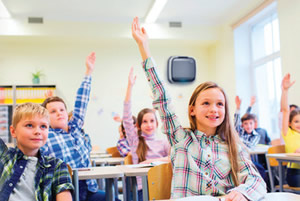Cleaner Air Means Happier, Healthier Students

Cleaner air means students will be healthier, and absent less, as was the case at Community Consolidated School District 181.
Nothing gets A principal’s attention quite like a parent or teacher concern. If it’s a health-related issue tied to air quality, the facility manager is also in the hot seat.
That’s where Mike Vilendrer, facility coordinator at Community Consolidated School District 181, found himself after a teacher and a parent voiced concern about air quality situations in separate classrooms.
Vilendrer’s IAQ to-do list included:
- Science lab: A student with sensitive allergies had persistent health problems because of suspected air quality issues in a science room. The child’s parent asked that a HEPA filter purification system be installed.
- Art room: Art supplies were sending lots of dust and other particles into the air, creating an uncomfortable and unhealthy environment.
- Classroom: A teacher reached out to the principal about consistent problems with the air quality in her classroom.
Vilendrer quickly realized that the HVAC system for the 108,000-square-foot school was not equipped to handle the air quality problems he faced.
He installed four AeraMax Professional commercial-grade air purifiers — three for the main problem locations and one in the band room.
Another reason Vilendrer decided to take a targeted approach. The unit is designed to turn on and off on its own and remain quiet in public buildings.
“As far as the operational side, they’re quiet as can be and don’t impact teaching at all,” Vilendrer says.
Eight months after installing the units the difference was clear. “The issues we were having completely went away,” he notes.
More remarkably, the art teacher told Vilendrer that there had been a noticeable drop in absences compared with past school years.
www.aeramaxpro.com
This article originally appeared in the issue of .